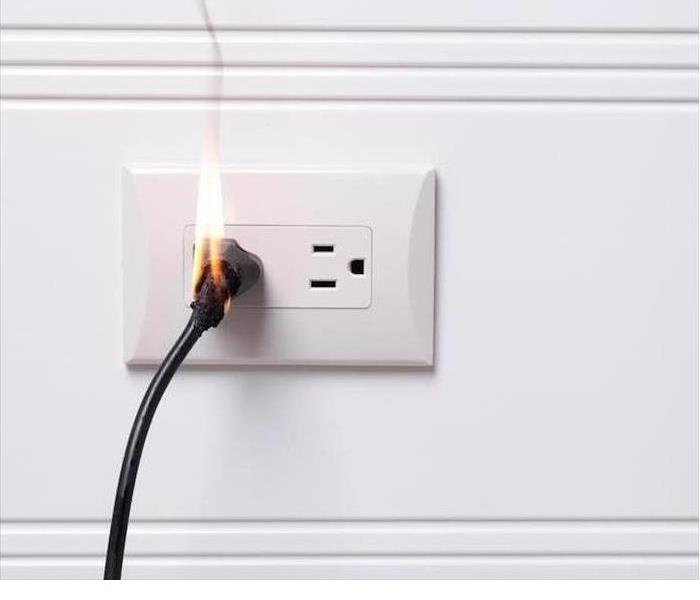Do You Need Help Understanding the Fire Damage Type and How it Leads to Better Remediation in Your Exeter Home?
5/12/2020 (Permalink)
 When fire damage stems from an electrical source, a different kind of soot results rather than from another type of fire. Contact SERVPRO to assess.
When fire damage stems from an electrical source, a different kind of soot results rather than from another type of fire. Contact SERVPRO to assess.
Matching Products and Techniques -- Why SERVPRO Delivers High-Quality Fire Debris Cleanup in Exeter
Almost 3,000 residential fires per year identify a dryer issue like lint or other electrical malfunction as their cause. Kitchen fires are a close second. Getting familiar with the types of debris that may be left behind after various types of fires in your Exeter home is good for homeowners to know and review often.
Fire Debris Types
The kind of debris a fire leaves in your Exeter home relates to the types of fuel burned and the temperature of the fire. Paper and wood burn high and hot, leaving behind loose ash. Electrical fires and slow, smoldering burns with fabrics as the fuel leave a thick and sticky coating. Fires starting in the kitchen are often grease and protein related, leaving a thin and hard to remove layer on surfaces, and a particularly unpleasant odor.
With the types of fire debris possible after household fires in Exeter covering a broad range, a one-size-fits-all approach to clean up is unreasonable and ineffective. As a fire moves its way through the spaces of a home a variety of articles are likely to provide fuel for the flames. This means that when our team arrives to assess the fire damage scenario and to plan for fire debris remediation, we must pair up the types of soot and charred items with the cleaners and tools we have available, expecting variation space by space.
Fire Debris Restoration
Fire debris restoration is one of the main reasons why SERVPRO exists as a disaster recovery business. Our technicians pursue certification as fire and smoke specialists from the IICRC, learning how to identify the different kinds of soot and other fire debris and to pair the damage and residues with effective cleaning and clearing options.
Light soiling responds well to dry sponging and vacuuming. SERVPRO prevents spread of fire residues by using equipment fitted with HEPA filters. We use a foam cleaner on fabrics with ashy residues, the tiny bubbles lifting and containing the tiny, dry particles.
Thicker, sticky fire residues need a cleaning product with wetting agents and surfactants to break up the coating for wiping off. When the residues are particularly hard to dislodge SERVPRO crew members use agitation or abrasive tools to remove the coating. The thin, shellac-like coating left after kitchen fires often needs a solvent and both agitation and an abrasive sponge or cloth to remove.
Damaged Building Materials and Furnishings
Charred building materials and furnishings are another type of fire debris SERVPRO manages. Our crews train to clear your property of this potentially toxic debris safely, bagging what cannot be restored and disposing of the materials as directed by local regulation. We also work with homeowners to explain and ensure that everything we say needs to be removed or destroyed, really does need to be.
SERVPRO of Reading helps residents in our communities with the difficult job of clearing debris and residues from fire damaged properties. As soon as the firefighters release your home call us at (610) 779-8189 for an assessment of the fire debris cleanup needed.
Learn more about Exeter.






 24/7 Emergency Service
24/7 Emergency Service